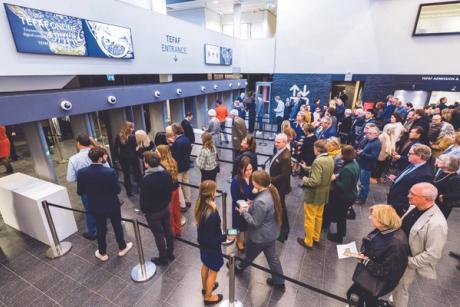
The Financial Action Task Force (FATF) has published a report depicting the lure of the art and antiques market for organized criminals, weeks before a major criminal network was exposed in Canada and information leaked about the attempted armed robbery of jewelry during from last year’s Tefaf Maastricht art fair.
The intergovernmental agency covers many jurisdictions and advises on global policies, with a focus on anti-money laundering (AML) regulation and counter-terrorism. Its latest report, published in February, aims to outline the top vulnerabilities, while providing a list of known “risk factors.”
Topics range from fraud, money laundering, illicit trafficking to terrorist financing. “The trade in works of art and antiques, especially those of high value, can attract criminals who seek to exploit the sector’s history of privacy and the use of third-party intermediaries to launder the proceeds. of their crimes, including drug trafficking, corruption and other crimes,” said a FATF spokesperson.
The report reiterates long-standing claims and concerns that the market provides a platform for organized crime, which is likely to provoke an industry backlash, particularly around the use of the United Nations Office Against Drugs and Crime 2011 alleging that the illicit proceeds of transnational crime involving artistic and cultural property could amount to “up to $6.3 billion”.
This claim is disputed by Ivan Macquisten in a letter published in the April 2023 issue of The arts journal. He writes that the figure is not “a value for illicit antiquities”, but rather a value that “encompassed all artistic and cultural assets”. Even then, he continues, “it was an estimate based on multiple sources.”
Nonetheless, consolidating 60 pages of long-standing research highlights growing areas of vulnerability, including the proliferation of online commerce, digital assets and the expansion of art funding methods, with the findings aimed to help governments to regulate the field. Art fairs are also noted as vulnerable as they are “not obliged” to meet requirements such as “confirmation of the provenance of cultural objects for sale”, or the identity of buyers and the source of their funds. .
“As the world’s leading authority and standard-setting authority on anti-money laundering and anti-terrorism financing, FATF reports are important and useful, even if they don’t necessarily say something that doesn’t hasn’t been said or thought of before,” says Rakhi Talwar. , artistic compliance consultant. “A report like this sets expectations for how risks in the art market should be addressed globally.”
Some art market experts have expressed concern about the anecdotal nature of parts of the report. “Diligence and transparency are an important goal, and the art market often falls short,” says Nicholas O’Donnell, partner at law firm Sullivan & Worcester. “But this report could just as well have been a IndianaJones script – long on narrative drama, short on evidence.
He adds that the inclusion of shell companies in his list of risk factors to consider could be misleading: There is nothing illegal about it, nor [is it] particular to the art market.
New pressure
While the report itself provides little new information, its timing should ensure it grabs attention. Just weeks after its publication, Canadian police announced that they had seized more than 1,000 works and arrested eight suspects involved in counterfeiting works believed to be by Ojibwa artist Norval Morrisseau. That the network involved a family member of the late artist as well as links to forced child labor reinforced wider concerns about the scope and scale of crime in the art market .
The telegraph also recently reported that Dutch police are closing in on identifying the suspects linked to the armed robbery at Tefaf Maastricht last year, with sources claiming they were linked to the infamous Pink Panthers Balkan crime organisation. April also marks a year since art market players have had to navigate through sanctions imposed on Russia by the West.
The UK Treasury recently updated its guidance on AML requirements, which has helped turn the legislation into real business processes, a move which is also supported by leading trade bodies such as the British Antiques Dealers’ Association, the Society of London Art Dealers and the Association of Art and Antique Dealers. They recently joined forces to commission a series of training videos.
Whether pressure on governments and law enforcement agencies will translate into action remains to be seen. The report notes that “case studies and operational discussions revealed that the lack of prioritization among law enforcement on [money laundering and terrorist financing] investigation related to cultural objects is the main investigative challenge.
Rena Neville of Corinth Consulting, specialist in AML compliance, said: “The report is clearly far-reaching, and it will likely help governments looking to regulate the market, but it could be more productive if this type of report dealt separately intentional bad actors participating in commerce versus the vast majority that are parts used by bad actors.
